How does the ENFP personality fit into the Big Five personality traits?
Reading time: 5 minutes

Gregory Park, Ph.D.
Author
In personality studies, scientific researchers often use a trait-based approach to describing the differences between people instead of using personality types. The most well-established method is the Big Five, which describes differences along five broad dimensions:
Personality types can be thought of as a very rough approximation of someone’s combination of underlying personality traits. Two people with the same personality type will be somewhat similar on these dimensions, but no two people will be exactly the same.
ENFPs tend to share a similar combination of traits, so as a group, they also share some common patterns of thinking, behaving, and relating to other people.
In the graph below, you can see where ENFPs fall along each of the Big Five dimensions. Every dot is an individual ENFP, and darker blue areas means more ENFPs fall in that area.
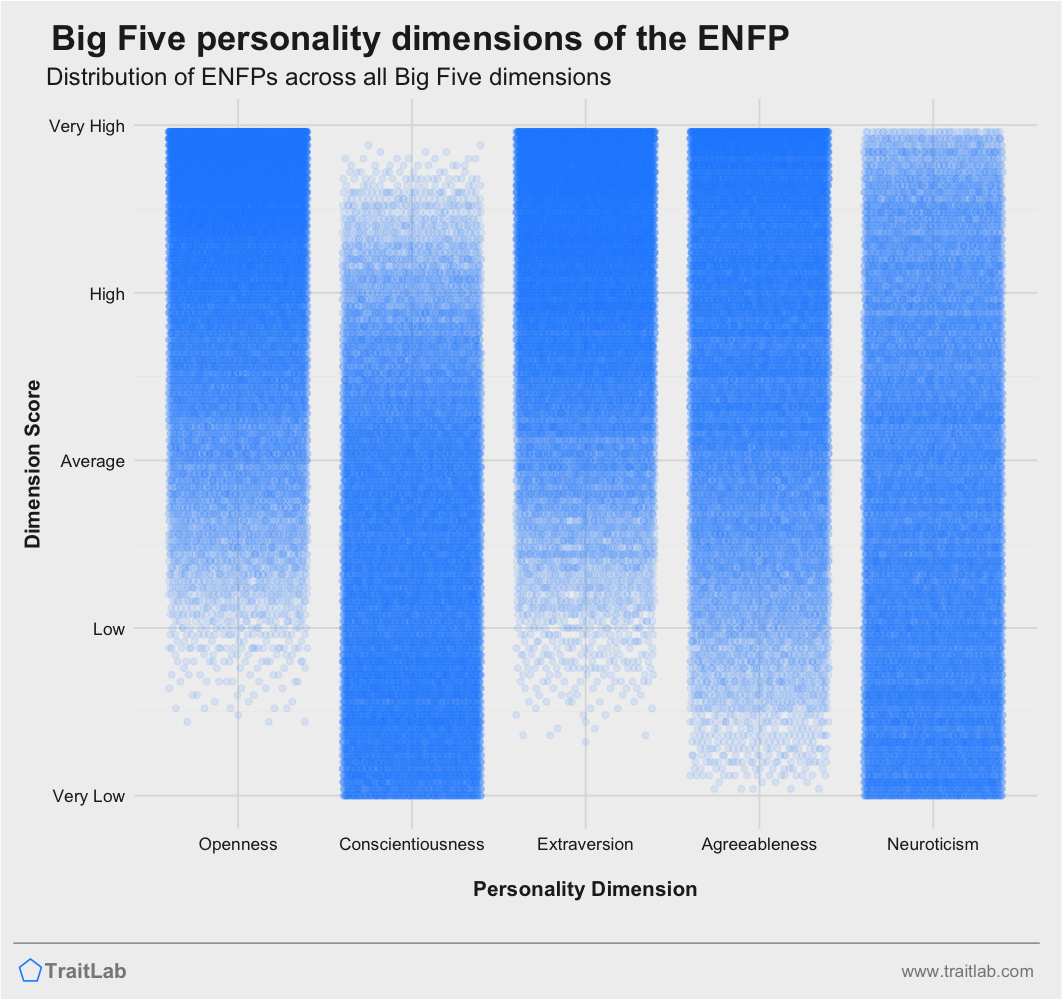
For example, note the pattern of ENFPs on the Agreeableness. While there are ENFPs along the entire range, the area at near the top is much denser and darker, because most ENFPs tend to crowd around the high end of Agreeableness. Overall, most ENFPs are well above average on Agreeableness.
Similarly, we profile the ENFP personality type by seeing where most ENFPs fall along each of the Big Five dimensions.
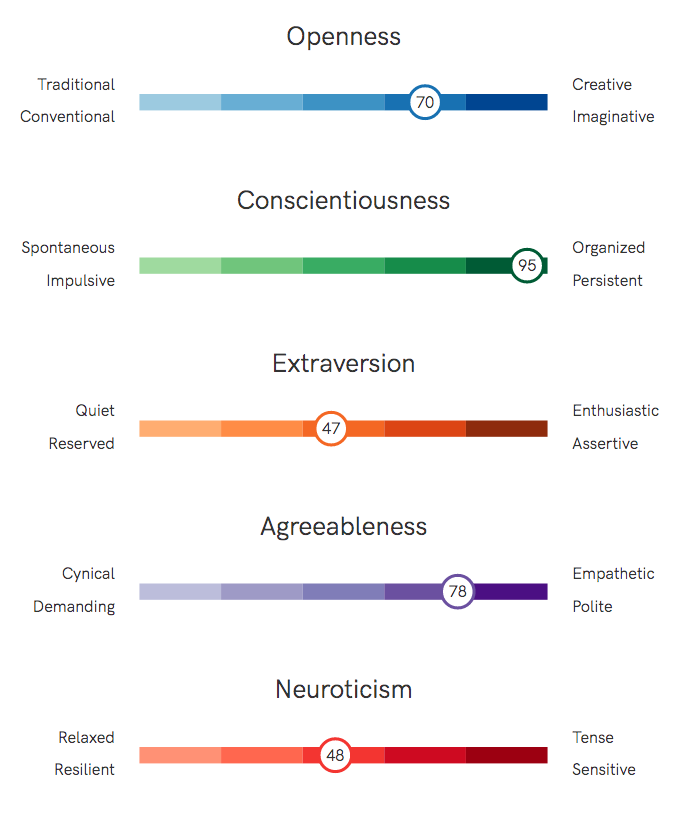
Do you know your Big Five?
Learn about your personality traits and so much more with TraitLab's comprehensive assessment.
ENFPs are usually score highly on Openness to Experience.
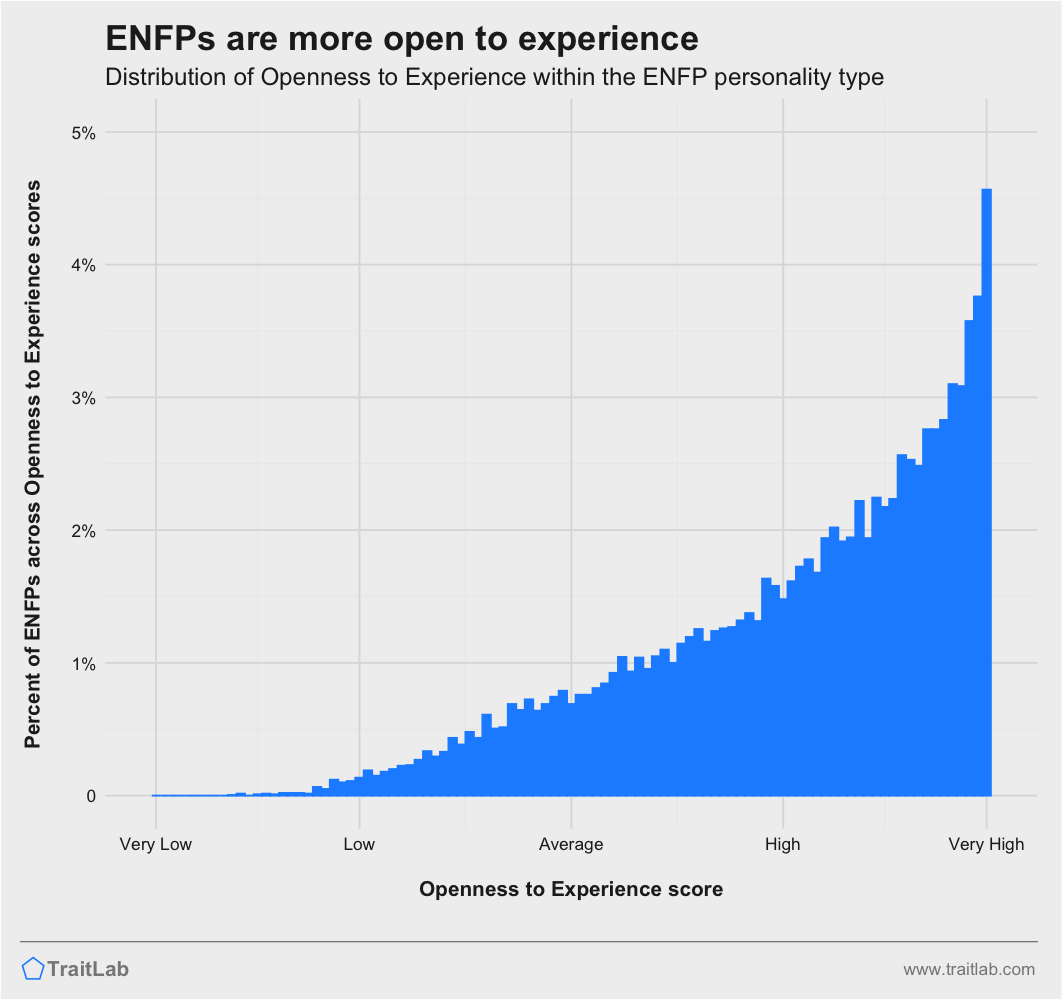
ENFPs tend to be higher on Big Five Openness to Experience, with quite a few falling at the extremely high end of the dimension. Openness is related to a preference for novel experiences and abstract ideas over more conventional, familiar ways of thinking and doing things.
Highly open individuals, like many ENFPs, enjoy trying new things, are intellectually curious and have a love for learning, and like discussing more abstract or philosophical topics. They tend to have a diverse range of interests and tastes, and will often choose something new and different over the the familiar and traditional.
ENFPs are slightly less conscientious.
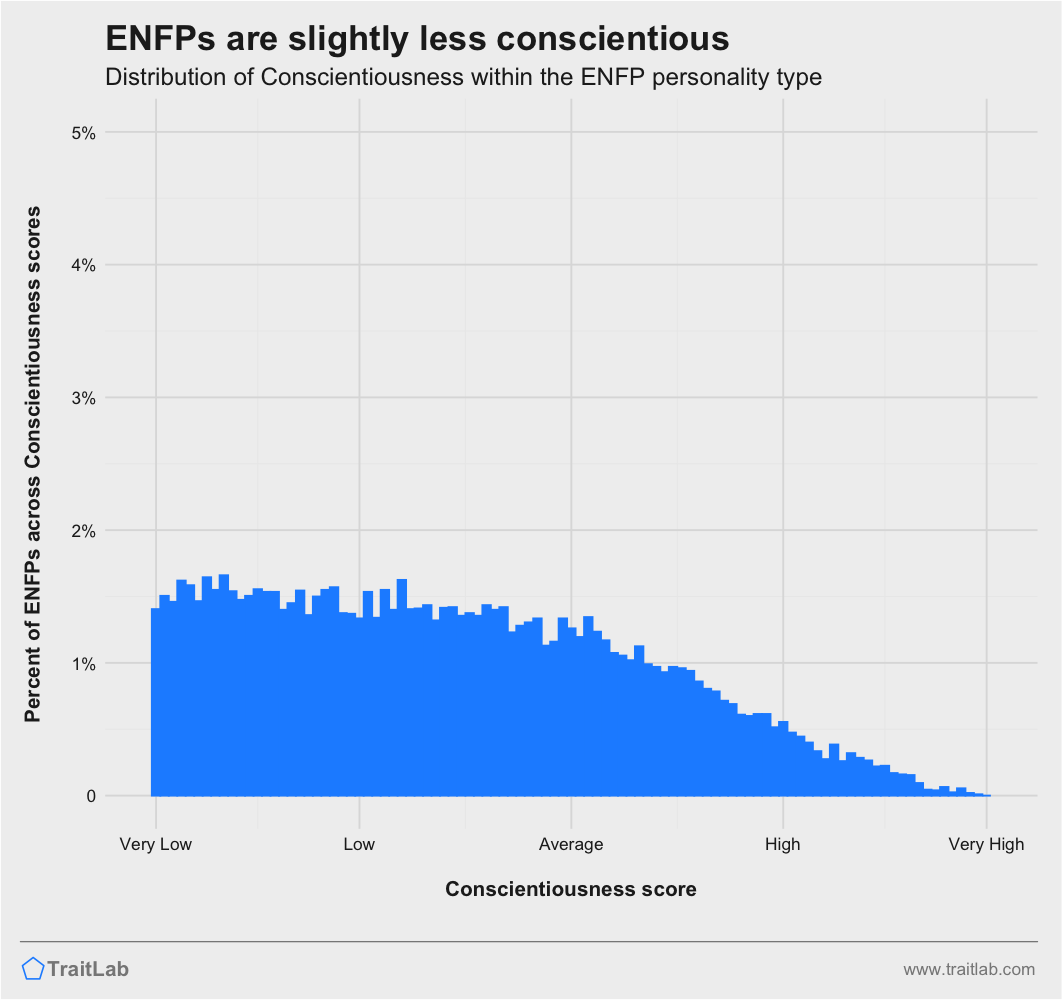
On average, ENFPs tend to be slightly lower on Big Five Conscientiousness, but as you can see above, there is wide variation among ENFPs. While most fall somewhere below the average, there are still quite a few highly conscientious ENFPs.
Conscientiousness describes one’s tendency to highly industrious, self-disciplined, organized, and stick closely to a consistent schedule.
Less conscientious ENFPs are more easily distracted by new opportunities and possibilities, and will be more likely to jump around between smaller goals rather than focus on a single long-term goal. As ENFPs fall lower on conscientiousness, they will be more irregular in their routines and more accepting of disorganization and chaotic environments and schedules.
For the exceptional ENFPs that fall on the high end of conscientiousness, they will stand out in their ability to maintain a long-term vision and work tirelessly towards achieving it, and will tend to develop rigorous routines and systems for efficiently working through tasks of everyday life.
Given the wide range that ENFPs show in conscientiousness, I’d suggest using a more precise measurement like TraitLab’s free Big Five test to learn where you fall on this dimension, rather than rely on a personality type.
ENFPs are generally highly extraverted.
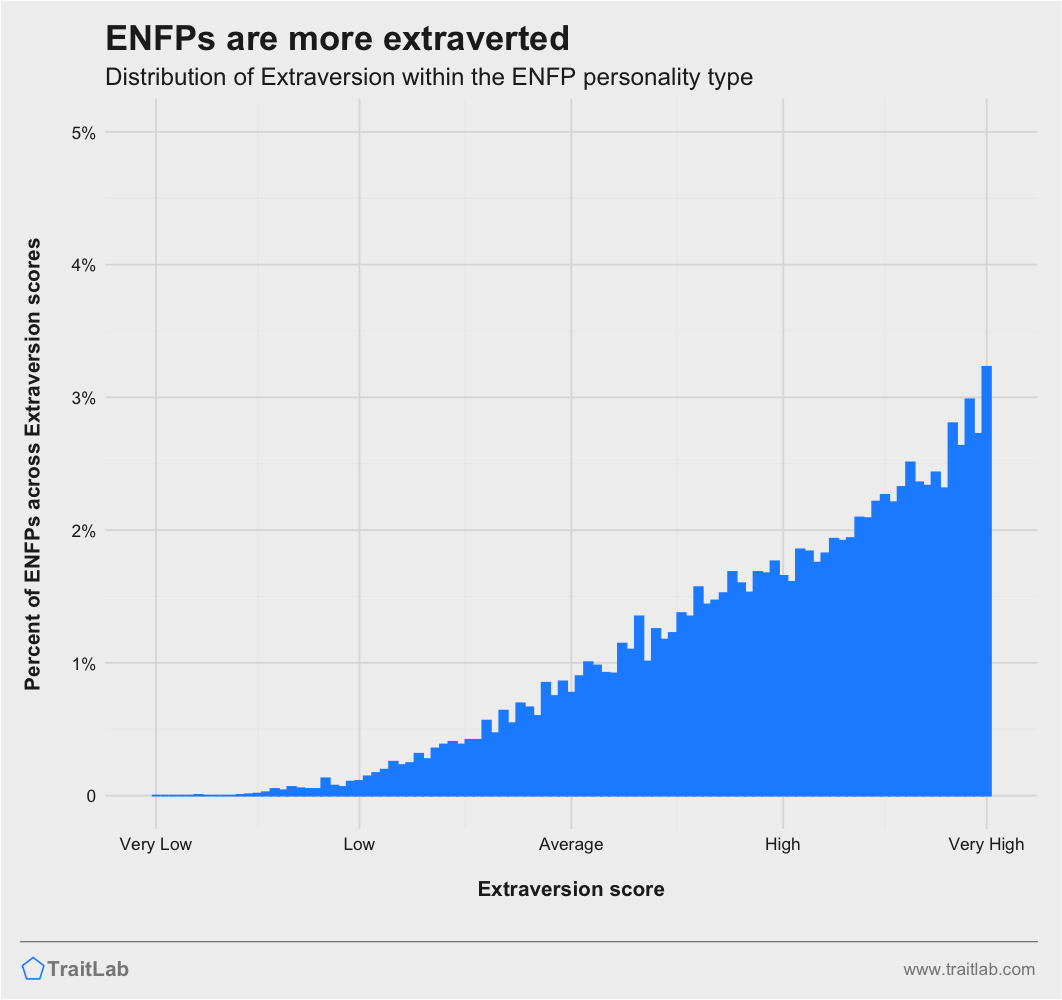
ENFPs are consistently some of the most extraverted individuals across all personality types. With very few exceptions, ENFPs fall well above average on Big Five Extraversion. ENFPs are often brimming with enthusiasm and energy, are highly expressive and vibrant, and tend to have more bubbly, cheerful dispositions.
In a group, ENFPs will often have one of the loudest voices (and loudest laughs, too). They don’t hold their emotions in and will confidently express plenty of joy, happiness, and excitement.
ENFPs are usually highly agreeable.
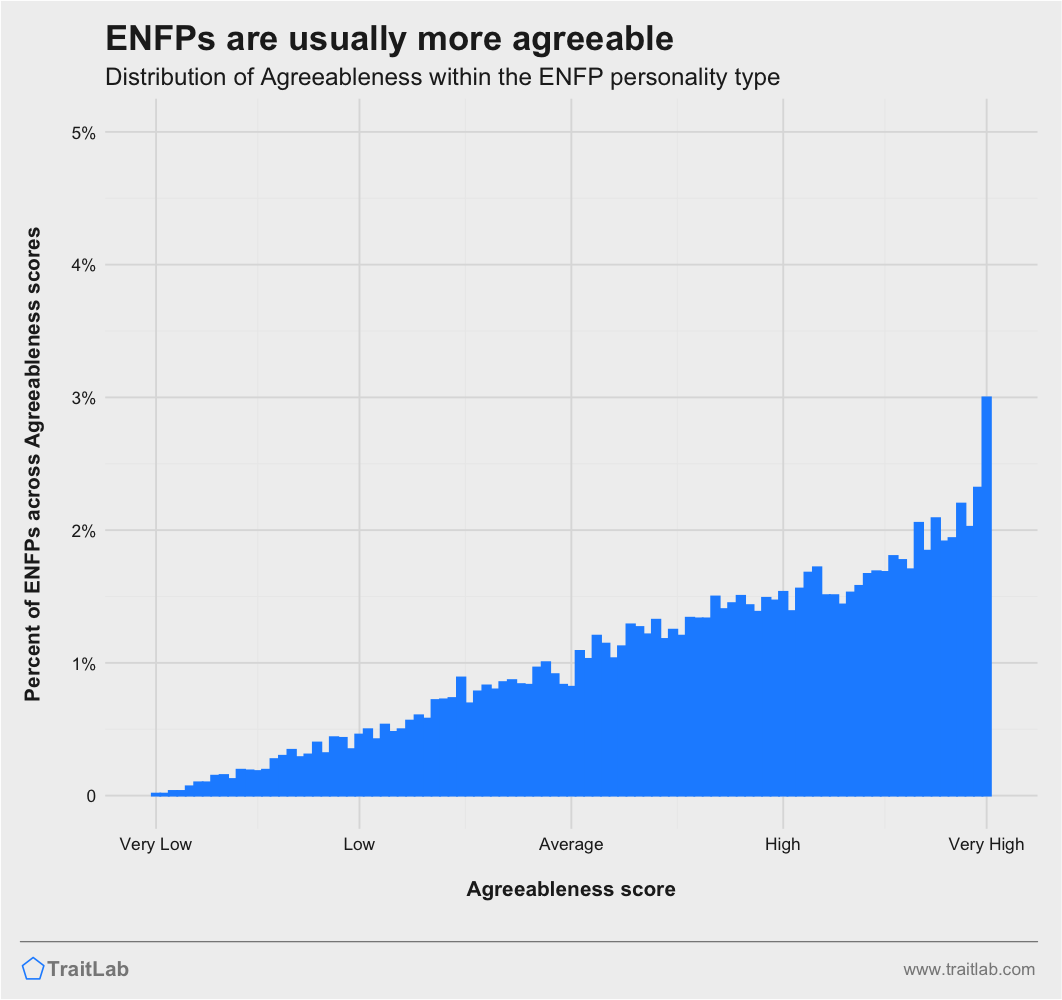
ENFPs tend to be fairly higher on Big Five Agreeableness than most people. Agreeableness describes motivations to build and maintain positive relations with others, and a general sense of trust, empathy, and concern for other people.
Highly agreeable people, like many ENFPs, tend to avoid creating interpersonal conflicts. When they sense social tension, they will naturally find ways to reduce or resolve it. ENFPs are often highly empathetic and unusually skilled at sensing and reacting to the emotions of others.
ENFPs are widely varied in their level of Neuroticism.
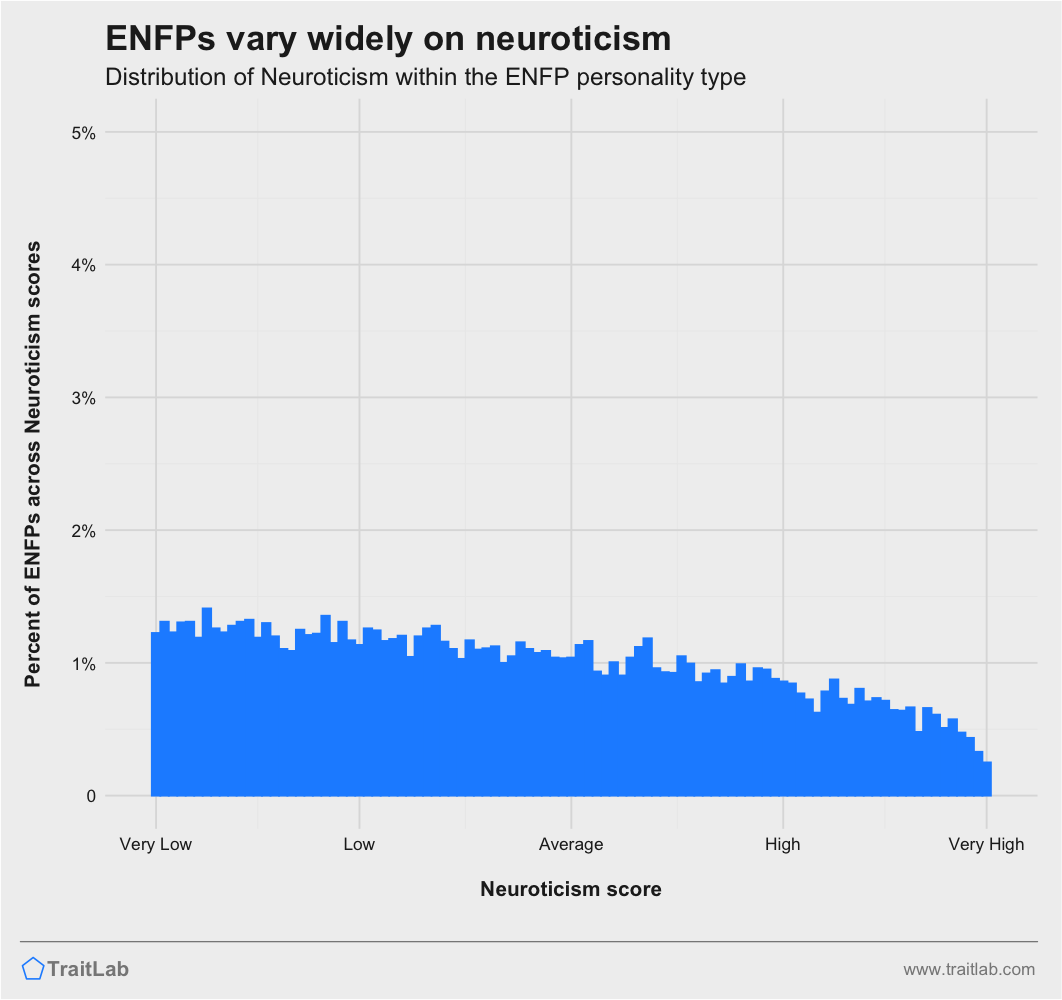
ENFPs show almost no consistency in their level of Neuroticism or Emotional Stability. An ENFP can be very high, very low, or very average on this Neuroticism, as personality types tend to be very poor at capturing this critical dimension.
Neuroticism describes one’s emotional variability and sensitivity to all kinds of stress. Highly neurotic ENFPs have more dramatic and frequent mood swings, are easily irritated, and more frequently experience negative emotions like frustration, anxiety, and sadness.
Less neurotic ENFPs will have higher emotional stability, more predictable moods, and tend to handle physical and mental stress with greater ease. These more easy-going ENFPs will be less likely to ruminate on negative thoughts, are more optimistic, and more self-confident.
Curious about your own level of Neuroticism? You can measure it right now with TraitLab’s free Big Five test, along with all of the Big Five dimensions.